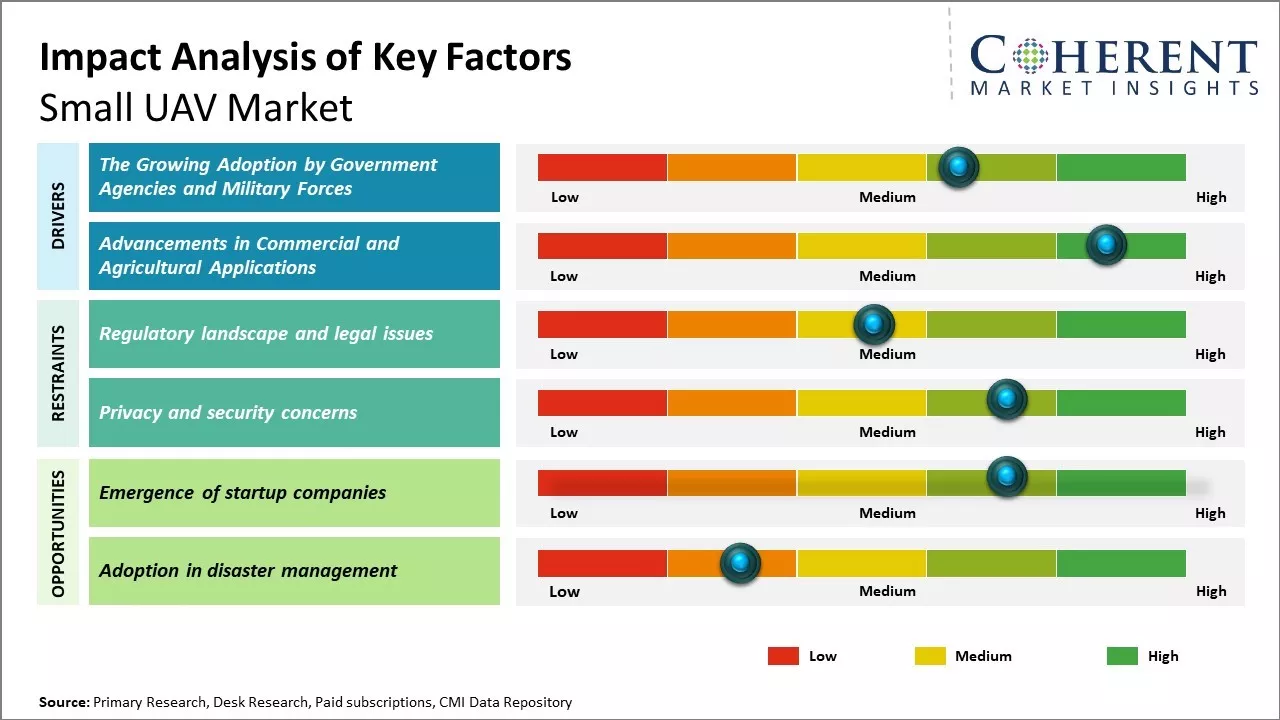The small UAV market is estimated to be valued at US$ 7.44 billion in 2025 and is expected to reach US$ 16.06 billion by 2032, growing at a compound annual growth rate (CAGR) of 11.6% from 2025 to 2032.

To learn more about this report, Request sample copy
The small UAV market is witnessing significant growth driven by factors such as the increasing adoption of these drones for commercial applications across industries such as agriculture, insurance, security, and surveillance. The surging popularity of mini drones for recreational purposes among households is also supporting the market growth. Additionally, technological innovations leading to the development of advanced small drones with features such as high resolution cameras, extended battery life, and autonomous operations are expanding the scope of applications. However, regulatory constraints around drone usage in certain countries may hinder the market growth to some extent. Continued regulatory easing is expected to further open up new use cases and catalyze small Unmanned Aerial Vehicle (UAV) adoption going forward.
Small UAV Market Drivers:
The Growing Adoption by Government Agencies and Military Forces
The use of small UAVs for both military and civilian applications by government agencies is growing rapidly around the world. Many countries are investing heavily in developing drone technologies to gain strategic advantages and enhance surveillance capabilities. Law enforcement and border security agencies have also recognized the potential of drones to more effectively monitor areas, track criminal activity and suspects. Their low operational costs compared to manned aircraft and ability to reach remote locations is making them especially appealing for military training exercises and homeland security missions. The Federal Aviation Administration (FAA) predicts governmental agencies will account for over half of all drone registrations in the U.S. in the coming years.
The expanding role of drones for disaster management and emergency response operations is another key factor driving their adoption. Several firefighting and emergency medical services departments have already started deploying small drones equipped with cameras and sensors to assist in Search and Rescue missions amidst natural disasters like floods, earthquakes, or wildfires. They allow emergency crews to rapidly scan vast affected areas from the sky and locate people trapped under debris or stranded residents in need of aid. Drones are also being used to survey infrastructure damage and disruption caused by disasters to facilitate restoration and relief work. This is likely to further increase their procurement and integration within governmental organizations worldwide looking to bolster emergency preparedness and response capabilities.
Joining thousands of companies around the world committed to making the Excellent Business Solutions.
View All Our Clients